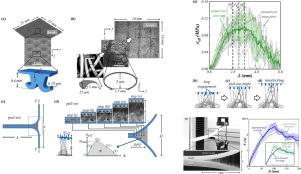Journal of the Mechanics and Physics of Solids ( IF 5.0 ) Pub Date : 2021-08-08 , DOI: 10.1016/j.jmps.2021.104600 Vanessa Restrepo 1 , Maryam S. Hosseini 1 , Chris Gallant 2 , Bradley Weymouth 2 , Pablo Zavattieri 1

|
Hook-and-loop-like joints have been widely used in many engineering applications and even observed in nature. The demand for computational models to predict the behavior of fasteners is increasing as they will be key for reducing design process time and manufacturing costs. Here, we develop a bottom-up two-scale modeling strategy, which enables us to capture the mechanical performance of a hook-and-loop fastener at both micro- and macroscales. In particular, we employ a two-scale homogenization approach capable of predicting the mechanical behavior of the hook-and-loop fastener. The model starts with a micromechanical model of a hook-and-loop fastener which considers the detailed geometry of the individual building blocks of the hook-and-loop fastener and their statistical geometrical variability through a so-called Representative Hook and Loop Element (RHLE) computational domain. The second scale considers the homogenization of the micromechanical model into a Detachment Process Zone (DPZ) which reveals an emerging length scale. The resulting effective traction-separation law concept is then employed at the macroscale with a Double Cantilever Beam (DCB) test using a macroscale model, which is then validated with experiments. The results suggest that the two-scale model strategy is able to predict the mechanical behavior of hook-and-loop fastener and to capture the main deformation and dissipative mechanisms at the relevant length scales.
中文翻译:

钩环扣件建模的两尺度策略
钩环状接头已广泛应用于许多工程应用中,甚至在自然界中也观察到。对预测紧固件行为的计算模型的需求正在增加,因为它们将成为减少设计过程时间和制造成本的关键。在这里,我们开发了一种自下而上的双尺度建模策略,这使我们能够在微观和宏观尺度上捕捉钩环紧固件的机械性能。特别是,我们采用了能够预测钩环紧固件机械性能的两尺度均质化方法。该模型从钩环紧固件的微机械模型开始,该模型考虑了钩环紧固件各个构件的详细几何形状及其通过所谓的代表性钩环元件 (RHLE) 的统计几何可变性) 计算域。第二个尺度考虑将微机械模型均匀化为分离过程区 (DPZ),这揭示了一个新兴的长度尺度。然后使用宏观模型通过双悬臂梁 (DCB) 测试在宏观尺度上采用由此产生的有效牵引分离定律概念,然后通过实验对其进行验证。











































 京公网安备 11010802027423号
京公网安备 11010802027423号